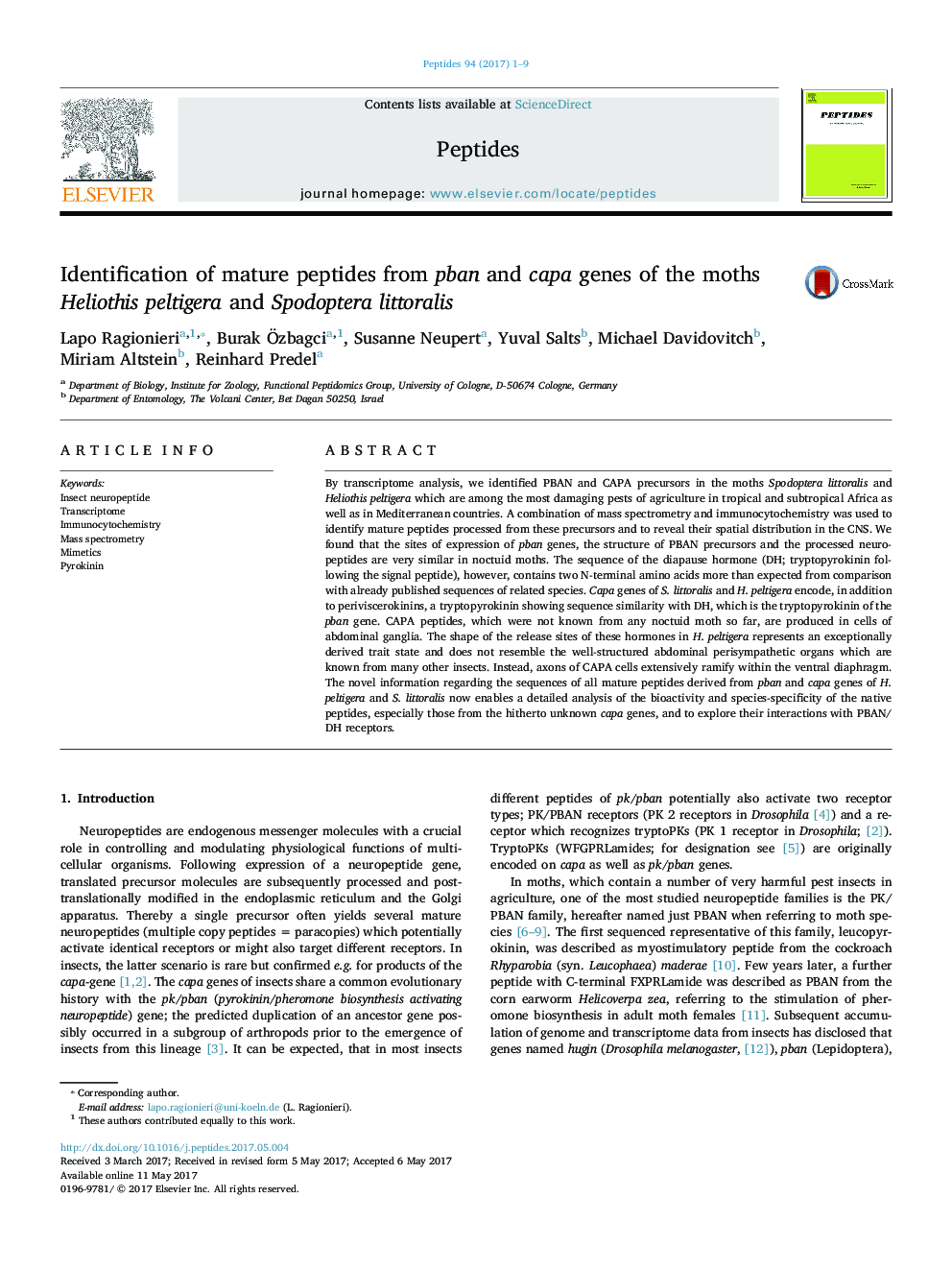| Article ID | Journal | Published Year | Pages | File Type |
|---|---|---|---|---|
| 5514596 | Peptides | 2017 | 9 Pages |
â¢PBAN and CAPA peptides were identified from two moth species.â¢pban and capa genes each encode for a sequence-related tryptopyrokinin.â¢The diapause hormone is two amino acids longer than expected.â¢Release sites of CAPA peptides in the abdomen show unique structural features.
By transcriptome analysis, we identified PBAN and CAPA precursors in the moths Spodoptera littoralis and Heliothis peltigera which are among the most damaging pests of agriculture in tropical and subtropical Africa as well as in Mediterranean countries. A combination of mass spectrometry and immunocytochemistry was used to identify mature peptides processed from these precursors and to reveal their spatial distribution in the CNS. We found that the sites of expression of pban genes, the structure of PBAN precursors and the processed neuropeptides are very similar in noctuid moths. The sequence of the diapause hormone (DH; tryptopyrokinin following the signal peptide), however, contains two N-terminal amino acids more than expected from comparison with already published sequences of related species. Capa genes of S. littoralis and H. peltigera encode, in addition to periviscerokinins, a tryptopyrokinin showing sequence similarity with DH, which is the tryptopyrokinin of the pban gene. CAPA peptides, which were not known from any noctuid moth so far, are produced in cells of abdominal ganglia. The shape of the release sites of these hormones in H. peltigera represents an exceptionally derived trait state and does not resemble the well-structured abdominal perisympathetic organs which are known from many other insects. Instead, axons of CAPA cells extensively ramify within the ventral diaphragm. The novel information regarding the sequences of all mature peptides derived from pban and capa genes of H. peltigera and S. littoralis now enables a detailed analysis of the bioactivity and species-specificity of the native peptides, especially those from the hitherto unknown capa genes, and to explore their interactions with PBAN/DH receptors.
Graphical abstractDownload high-res image (101KB)Download full-size image
